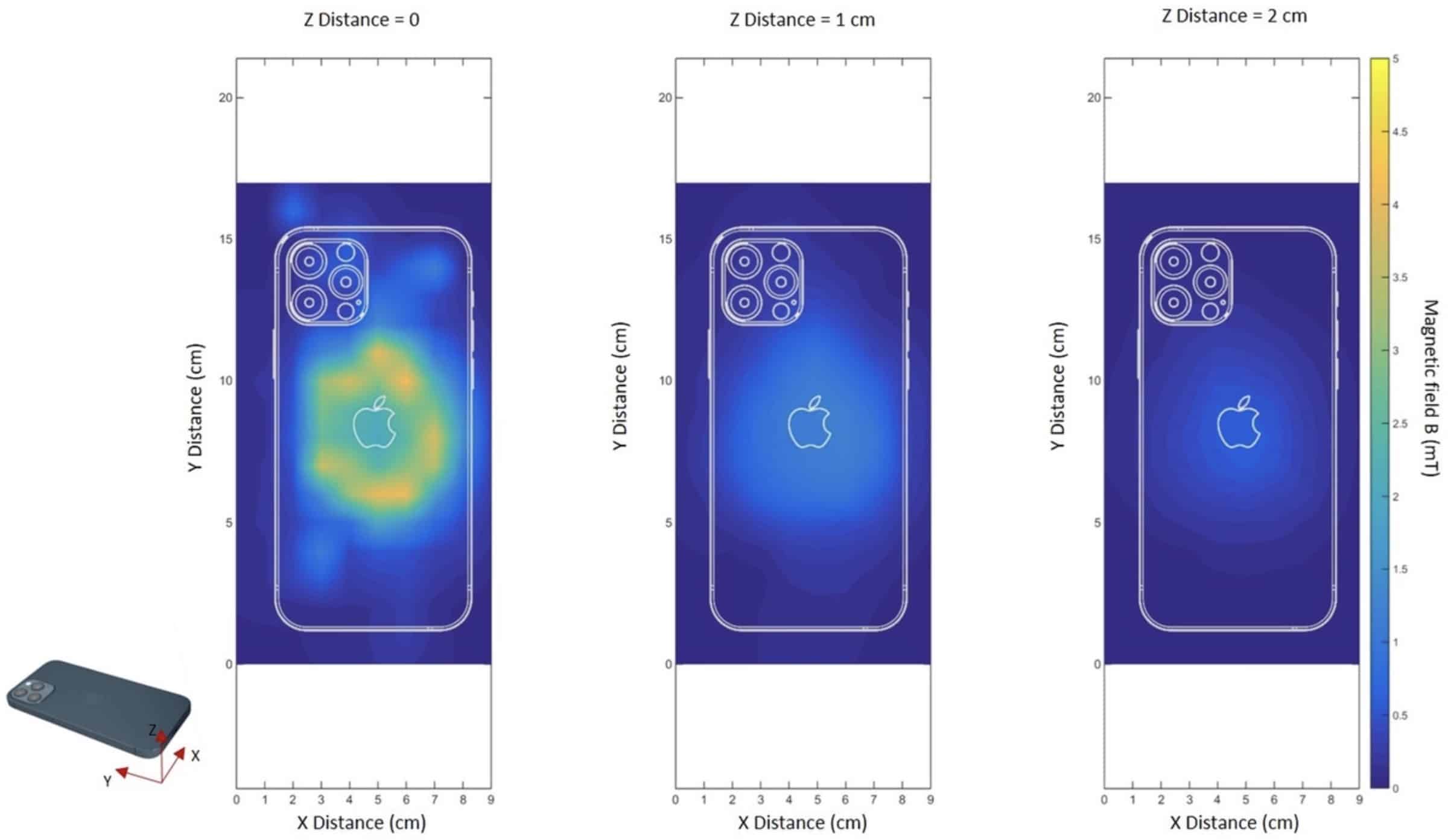The first study to test the magnetic interference of the iPhone and its MagSafe accessories on a comprehensive set of pacemakers (PM) and implantable cardioverter defibrillators (ICD) from all major manufacturers shows that the magnetic component of the iPhone 12 can inadvertently activate the magnetic switch of PMs and ICDs. This can be critically harmful if it happens outside a controlled environment or without the presence of medical practitioners. According to the authors, “for the first time, the magnetic interference phenomena accurately correlated to the magnetic field levels measured around the iPhone 12.”
The study was partially funded by the internal project of the Italian Institute of Health and made possible through a grant by the Italian Workers Compensation Authority and published in Pacing and Clinical Electrophysiology. It aimed to investigate the effects of magnetic interference of the iPhone 12 and its MagSafe technologies on a large set of cardiac implantable devices such as PMs and ICDs. It also aimed to propose possible adequate rules of conduct aside from Apple’s recommended safety distance of 15 cm between the iPhone 12 and cardiac implantable devices.
The introduction and recent ubiquity of wireless charging technologies prompted Apple to position a magnetic component inside the iPhone 12 to ensure that the magnetic component in the MagSafe charging base is aligned with the magnetic component inside the iPhone 12, thus enhancing the efficiency and reliability of wireless charging.
In the experiment conducted by the researchers, the iPhone 12 was placed at different distances from the cardiac implantable devices with intervals of 1 mm until such distance where the iPhone 12 can no longer activate the devices. The same method was done using an iPhone in a MagSafe case and in this scenario, the activation distance was found to be shorter.
The study also found out that the activation of the devices happens only in a few specific relative positions of the iPhone 12 with respect to the devices. Hence, activation of the devices varies depending on the technology used, sensitivity area, and position of the magnetic switch. What’s important is that the study was able to determine the actual distance at which the iPhone 12 can activate the devices.
Apple has said that magnets in iPhone’s Magsafe technology may interfere with medical devices such as PMs and ICDs. The results of the study are in line with Apple’s generic instructions for use of the iPhone, stating that medical devices such as implanted pacemakers and defibrillators may contain sensors capable of reacting to magnets and radio frequencies when in close proximity. As such, Apple recommends keeping iPhone and MagSafe accessories more than 15 centimeters away from such devices.
The researchers agreed with Apple’s instructions and advised that as a rule of conduct, to follow Apple’s indications relating to the safety distance of 15 cm. According to the researchers, the results from the study were also in line with the indications set by manufacturers of implantable devices. They cautioned, though, that in a real-life situation the recommended distance may not always be observed. As such, they say medical practitioners should advise patients with these implantable devices of the safety concerns with iPhone and MagSafe.
[Image: “iPhone 12 MagSafe technology and cardiac implantable devices: Assessment of the actual risk”, Pacing and Clinical Electrophysiology]

So-o-o-o…….the ginsu knife is sharp, don’t stick it in your eye. Got it.